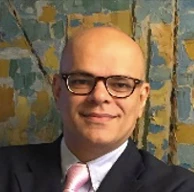 Reuse Center Humana Nova from Čakovec, a social cooperative collecting and recycling used textiles, clothing and footware
Reuse Center Humana Nova from Čakovec, a social cooperative collecting and recycling used textiles, clothing and footware
In today’s global economy, goods are produced cheaply, consumed quickly, and discarded even faster. But a short product life cycle risks overexploiting natural resources and irreversibly polluting the environment. This so-called take-make-dispose or ‘linear’ economy model is simply not sustainable on a planet with scarce resources and limited regeneration capacities.
But there is an alternative. The circular development model aims to achieve prosperity for all within planetary boundaries. At the core of the concept is the decoupling of economic growth from natural resource use, which can be achieved by “designing out” waste and pollution, keeping products and materials in use, and regenerating natural systems. While recycling is a core element of circularity, it often results in a reduction in material value. Real circularity requires products that can be reused, repaired, refurbished, remanufactured, and repurposed. This keeps products from losing value and even increase in quality as they circle through the system.
The circular economy is not an abstract concept—it is already applied by companies and governments around the world. Circularity’s business case is proven, together with its ability to create new and sustainable jobs.
The Circular Economy in Croatia
In Croatia, however, the circular development model has yet to take off. A forthcoming report by the Ministry of Economy and Sustainable Development (MESD) and the World Bank shows that Croatia’s economy is only 2.7% circular—meaning that more than 97% of all materials consumed each year never make it back into the economy as raw materials.
Waste management, including the collection and treatment of waste, is central for increasing circularity in Croatia as well as reducing the negative impacts of landfills on the environment, human health, and greenhouse gas emissions. Today, more than 56% of all municipal waste ends up in Croatia’s 108 active landfills—significantly more than the EU’s average landfilling rate of 23%. Croatia’s municipal waste represents the largest share, with only 34% of it recycled compared to the EU’s average of 48% in 2020.

The World Bank is supporting the Government of Croatia in improving waste management processes. The Government has identified the construction and demolition waste sector as a priority in its circular approach to waste management, regardless of the good results in the recycling rate of construction waste (in 2020, Croatia’s recovery rate was 60%, while the EU target for 2020 was 70%). This was prompted by two devastating earthquakes in 2020 and the large amounts of construction debris. The World Bank is supporting Croatia in this effort by helping the MESD develop a five-year Circular Economy Action Plan for the construction sector. The aim is to showcase and lead other sectors in Croatia in an effective application of circular economy principles, targeting waste reduction and—where waste generation cannot be avoided—recovering economic value from it while avoiding negative impacts on the environment and climate.
Rethinking mindsets
Yet, the circular economy is so much more than just waste management. Closing the material loop requires a rethinking in the way we design, produce, consume products, as well as how we reuse materials at the end of a product’s lifetime. This offers opportunities for the Croatian economy and calls for strategies that should focus on four priority sectors: food, construction, plastics, and textiles manufacturing given their significant environmental and socioeconomic impacts.
Croatia’s successful transition to a circular economy will require more than just a change in consumer and business behaviors and mindsets inspired by the idea of renewal and awareness that natural resources are not limitless. It will also need political and economic responses, requiring close collaboration among all stakeholders: the government, businesses, civil society, academia, media, and citizens.
To facilitate this critical process, the World Bank has supported the establishment of the Circular Economy Committee (CE Committee), an interdisciplinary advisory body to the MESD. Members are 14 organizations and professional associations representing all key sectors—public, private, academia, and civil society. The CE Committee’s task is to share knowledge and provide expertise to strengthen cooperation among all sectors and to advocate for the change of mindsets in today's throwaway culture to improve product longevity and recycling. One of the CE Committee’s initiatives is to advocate for the creation of a Circular Economy Hub—a space for sharing knowledge, innovations, and best practices among all stakeholders. In the future, such a Hub could be a physical location where circular technologies could be demonstrated, scaled, and recreated in a mini-household or production-line setting.
These efforts and measures are helping Croatia progress on making its economy more circular. The country must continue to push forward on these efforts to protect the environment and create a more sustainable economy. There is no time to waste!





Join the Conversation